
Executive Summary
In response to a client’s request to evaluate the feasibility of monitoring methane emissions outside hazardous classification zones, GLX Technologies delivered a custom, field-deployable prototype in just 10 weeks.
Leveraging simulations, sensor evaluations, and rapid iterative design, the GLX Professional Services team built and deployed eight continuous emissions monitoring systems (CEMS) to support real-world testing. The fast-prototype engagement allowed the client to validate methane detection capabilities, assess technical viability, and inform future production decisions—without the cost or delay of a full-scale system.
This case study illustrates how GLX enables clients to accelerate learning, reduce risk, and explore innovative solutions through rapid prototyping.
1.0 Introduction
At GLX Technologies (GLX), we help Oil & Gas and Water Utility clients explore what’s possible—fast. When a client asked whether methane emissions could be effectively monitored outside hazardous classification zones, our Professional Services team responded with a rapid feasibility project. In just 10 weeks, we designed, built, and delivered eight prototype continuous emissions monitoring systems (CEMS) to support field validation.
Rather than committing to a production-grade solution up front, the client leveraged our fast-prototype model to gain real-world insights quickly—evaluating sensor performance, system design, and installation strategies without full-scale investment. This case study highlights how GLX enables innovation with speed and purpose. When timelines are tight and the path forward is uncertain, our Professional Services team helps clients test assumptions, reduce risk, and make informed decisions.
2.0 Case Study
2.1 Problem
A client in the Oil & Gas sector approached GLX with two targeted questions:
- Can methane emissions be reliably detected from outside the site’s hazardous classification zones?
- Can this be done for less than current commercial solutions and without a recurring subscription?
Existing methane-sensing solutions required equipment installation within the classified area—adding cost, complexity, and regulatory burden. These solutions often come with recurring subscriptions and requirements for visualization on proprietary systems. Furthermore, camera solutions are effective but represent a significant cost per site, and may be overkill for numerous small sites that require detection. The client was interested in exploring an alternative monitoring approach that could be deployed outside the classification boundary and interfaced to their SCADA systems without a recurring subscription, but needed practical evidence before moving forward with full system development.
With limited precedent and a narrow decision window, the client engaged the GLX Professional Services team to rapidly prototype and field test a custom solution—allowing them to assess technical feasibility before committing to a production or alternative path.
2.2 Solution
GLX proposed a phased, fast-prototype engagement structured around three core objectives:
- Simulate and evaluate sensor candidates for methane plume detection outside the hazard zone.
- Scope, design, and build a field-deployable prototype with representative components and telemetry.
- Deploy and test the systems on-site to determine feasibility and inform next steps.
This approach prioritized speed, flexibility, and iterative learning—ideal for gaining actionable insights without requiring full-system investment.
2.2.1 Sensor Evaluation and Simulations
The GLX team began by modeling methane dispersion under various environmental and release conditions to estimate expected concentrations outside the hazard boundary. Based on these results, we shortlisted multiple sensors (Figaro 2600, 2611, 8410, and Fermion MEMS) for testing in the CEMS prototype.
Performance factors included:
- Sensitivity to target methane ranges
- Response time
- Environmental robustness
- Integration compatibility
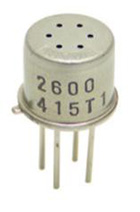 (a) |
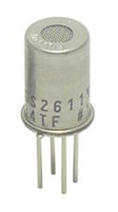 (b) |
 (c) |
 (d) |
Figure 1. Sensors evaluated: (a) Figaro 2600, (b) Figaro 2611, (c) Figaro 8410, (d) Fermion MEMS.
Simulations were used to identify optimal sensor placement and determine whether measurable detection would be viable under real-world site conditions impacted by varying leak rates and wind conditions.
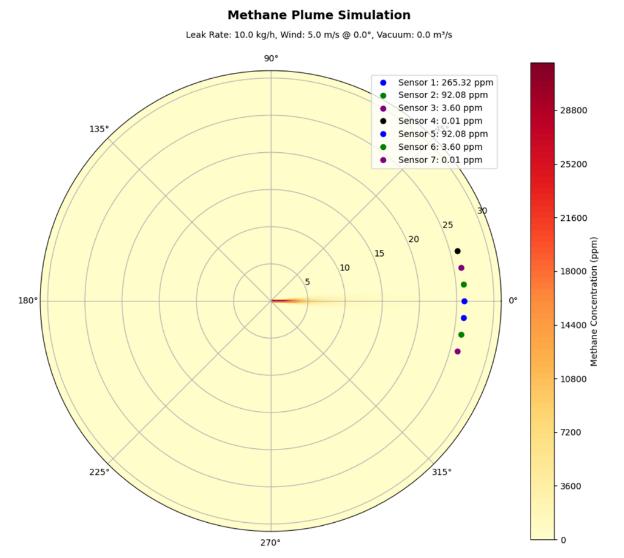
Figure 2. Methane plume simulation.
2.2.2 Prototype
Using insights from the evaluation phase, GLX designed and built eight prototype monitoring units, each equipped with:
- Selected methane sensors for the field evaluation, plus a temperature/humidity sensor to monitor sample conditions
- A compact all-in-one RTU (TBox) with LTE communications
- Printed circuit board to interface sensors and vacuum control to RTU
- 3D-printed manifold for housing methane sensors
- 3D-printed sampling port providing protection from water, dust, and insect intake
- 3D-printed weather station mounts
- IP67 enclosures
- Solar and LiFePO₄ battery power systems
The prototype performance scope was limited to developing a “smoke detector” capability—logging real-time analog measurements of methane accessible over a cellular network for the client to ingest in a third-party-developed Grafana dashboard for visualization. Quantification of methane levels was out of scope for the current prototype.
The client identified a small site where the 8 CEMS prototypes would be deployed and distributed uniformly outside the perimeter of the classified zones, maximizing the opportunity to test the sensors in different wind conditions. The client worked with third parties to deploy commercially available systems to provide a benchmark and control for the evaluation—these included systems designed for point detection within the classification as well as a shortwave infrared camera.
All units were developed in under 10 weeks—from concept through assembly and QA—and delivered to the client for installation on their own poles and skids outside the classification zones. This project highlighted the diverse capabilities of the GLX Professional Services team:
- Conceptual drawings were quickly 3D-modeled and printed for form, fit, and function testing allowing for quick iterations. These included the sampling ports, sensor manifold, and weather station mounts—each designed to interface to standard fittings.
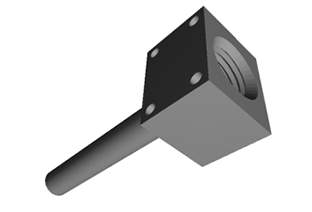 |
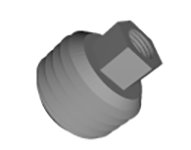 |
 |
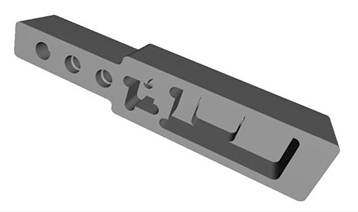 |
 |
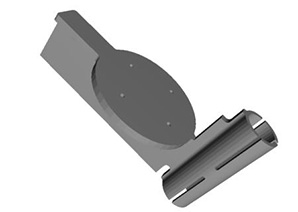 |
 |
- From breadboard to printed circuit board, the analog circuit was designed, integrated, and bench-tested with the sensors, vacuum pump, solenoids, and RTU.
 |
 |
Figure 4. CEMS fast prototype: analog circuit development.
- Leveraging GLX’s extensive PLC programming experience, the TBox all-in-one RTU was programmed and bench-tested.
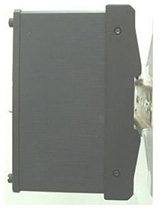 |
 |
Figure 5. CEMS fast prototype: TBox all-in-one RTU.
- The 8 CEMS prototypes were assembled, cold-loop checked, hot-loop checked, leak-checked, tested with calibration gas, and communications were verified.
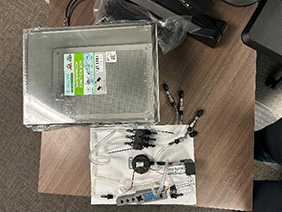 |
 |
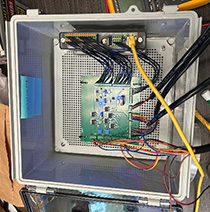 |
Figure 6. CEMS prototype integration and test.
- Solar panels were pre-assembled and the CEMS prototypes were packaged in waterproof totes for delivery to the site for field deployment and test.
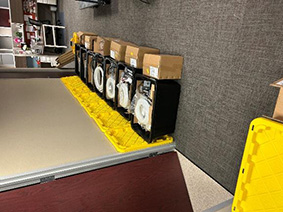 |
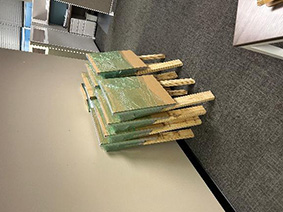 |
 |
Figure 7. CEMS prototype package and delivery.
Drawing packages were delivered digitally including bill of materials, general layout, and illustrated part breakdown of the assembly.
2.2.3 Site Deployment and Testing
GLX and the client worked through weather delays to install the CEMS prototype to the client-developed skid and pole assemblies. The client’s winch design made installation and hoisting of the sampling ports and weather stations convenient.
 |
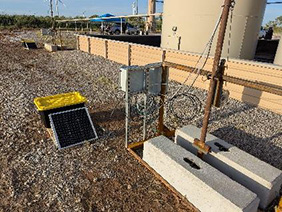 |
 |
Figure 8. CEMS prototypes installed on client-furnished poles and skids.
GLX supported installation and integration with a partner of the client who developed a Grafana dashboard, enabling the client to monitor the real-time communication status, methane readings, and environmental conditions remotely.

Figure 9. Grafana dashboard developed by 3rd party.
The site test confirmed that methane could be detected outside the hazard zone—validating the feasibility of this monitoring concept. The 2611 sensors generally showed greater sensitivity and reaction time to the content of methane sampled; however, there were clear correlations to the 2600 and MEMS sensor data. Though not designed for a long lifespan and production reliability, two months into the trial the CEMS prototypes continue to communicate data for the client’s evaluation of next steps.
2.3 Timeline and Lessons Learned
The 10-week timeline enabled early discovery, which helped the client:
- Validate sensor response thresholds in real conditions
- Identify power and weatherproofing improvements for future iterations
- Assess the pros and cons of outside-classification monitoring relative to traditional in-zone options
This rapid prototype exercise enabled data-driven decision-making, not assumptions, to guide the client's next move. The timing precision of the TBox did not support the pulsing requirements of the Figaro 8410. Based on the performance of the Figaro 2600 and 2611, this was not a show-stopper, but the 8410 input was dismissed for the evaluation. If integration of the 8410 is desired in the future to take advantage of its lower power consumption, a separate precision pulse-width-modulation circuit would support the specifications of the sensor. The following improvements to printed prototype components were made to support future systems based on site environmental conditions:
- The manifold was updated to support improved installation and sealing of the sensors, as well as removing the 8410 sensor.
- Windy conditions and variance in the weather stations revealed necessary modifications to the mounting bracket.
- The sampling tube design was updated to improve waterproofing and strengthen the mounting bracket.

Figure 10. CEMS fast prototype: 3D modeling and printing.
The use of quickly procurable and inexpensive parts with poor documentation impacted the weather station integration—RS-485 wiring was labeled and color-coded differently in the product documentation and on the device. This did not impact delivery but highlighted potential changes necessary for a future production phase. Fortunately, experience with serial communications in other systems permitted the integration without damaging the units.
Similar to the above, the inexpensive charge controllers selected for the prototype were specified to support LiFePO₄ batteries, but did not take advantage of their higher charge efficiencies. The limited charge current provided was appropriate for lead-acid batteries, but did not support the original power-budget calculations. The initial deployment of the prototype resulted in the batteries discharging within four days, necessitating cycling of batteries initially to maintain operation. GLX identified a new charge controller that met the required performance specification and increased the size of the PV for good measure, resolving the issue.
3.0 Conclusion
Not every project begins with a production-ready plan. That’s why GLX’s Professional Services team is built to meet clients where they are—from early feasibility to full deployment.
When you're facing an uncertain technical path or want to test feasibility before investing, our team helps you move fast, learn quickly, and make informed decisions.
Want to move fast on a concept, but not sure where to start? Let GLX help you de-risk your next innovation. Visit www.glxtech.com or contact us at sales@glxtech.com to get started.
